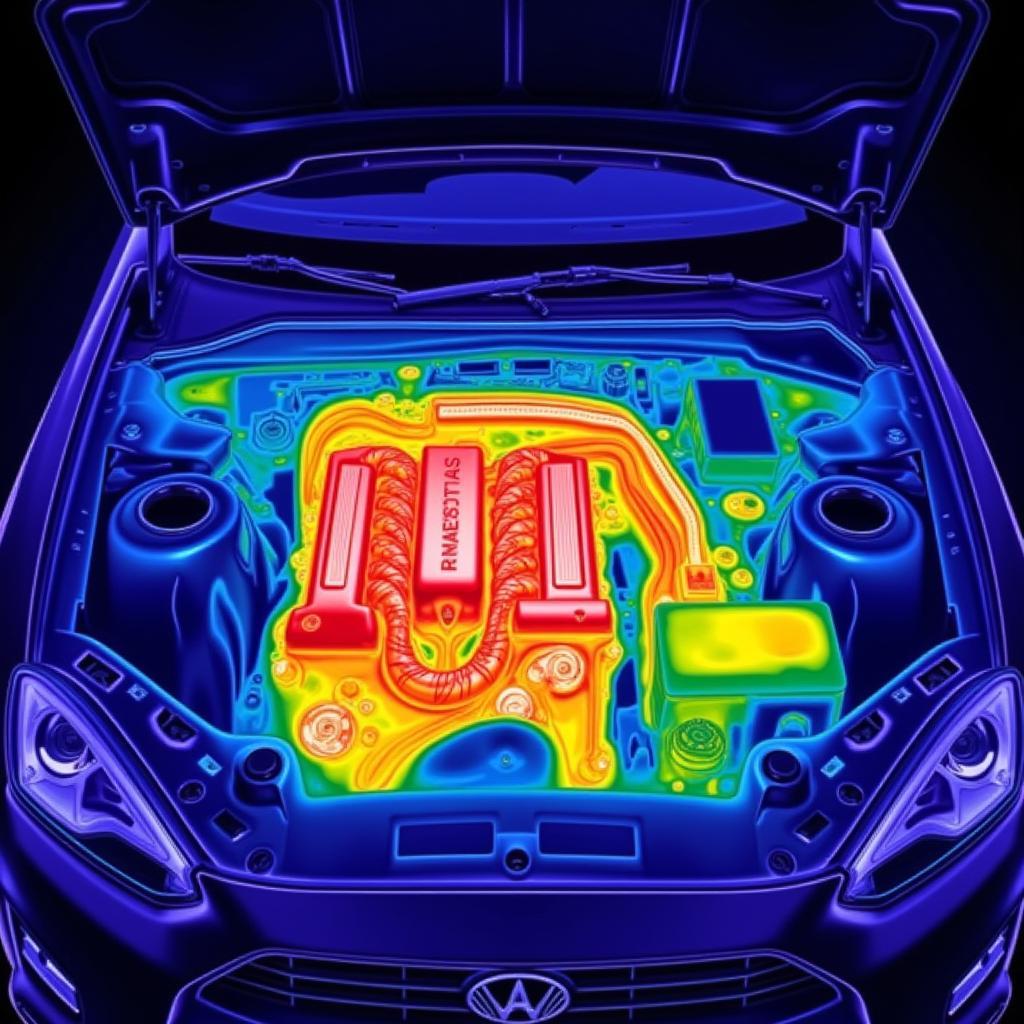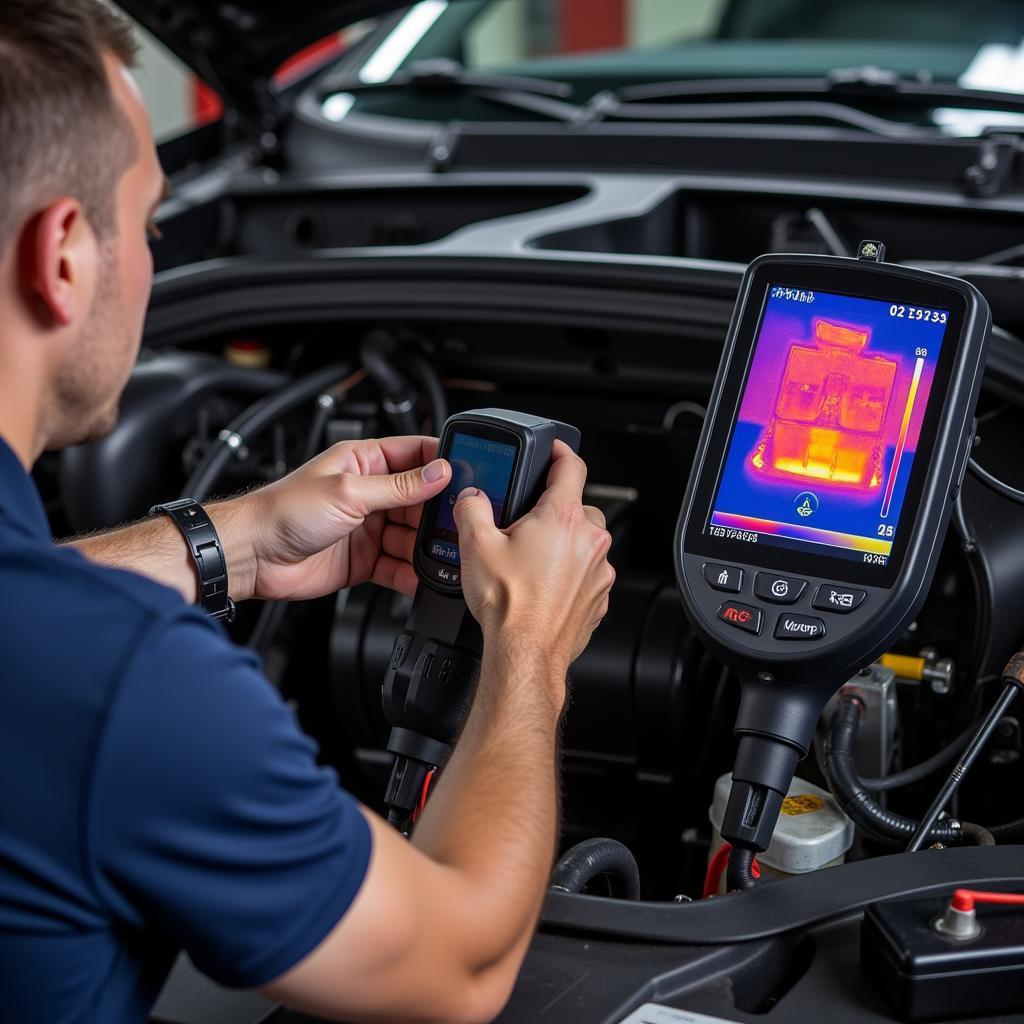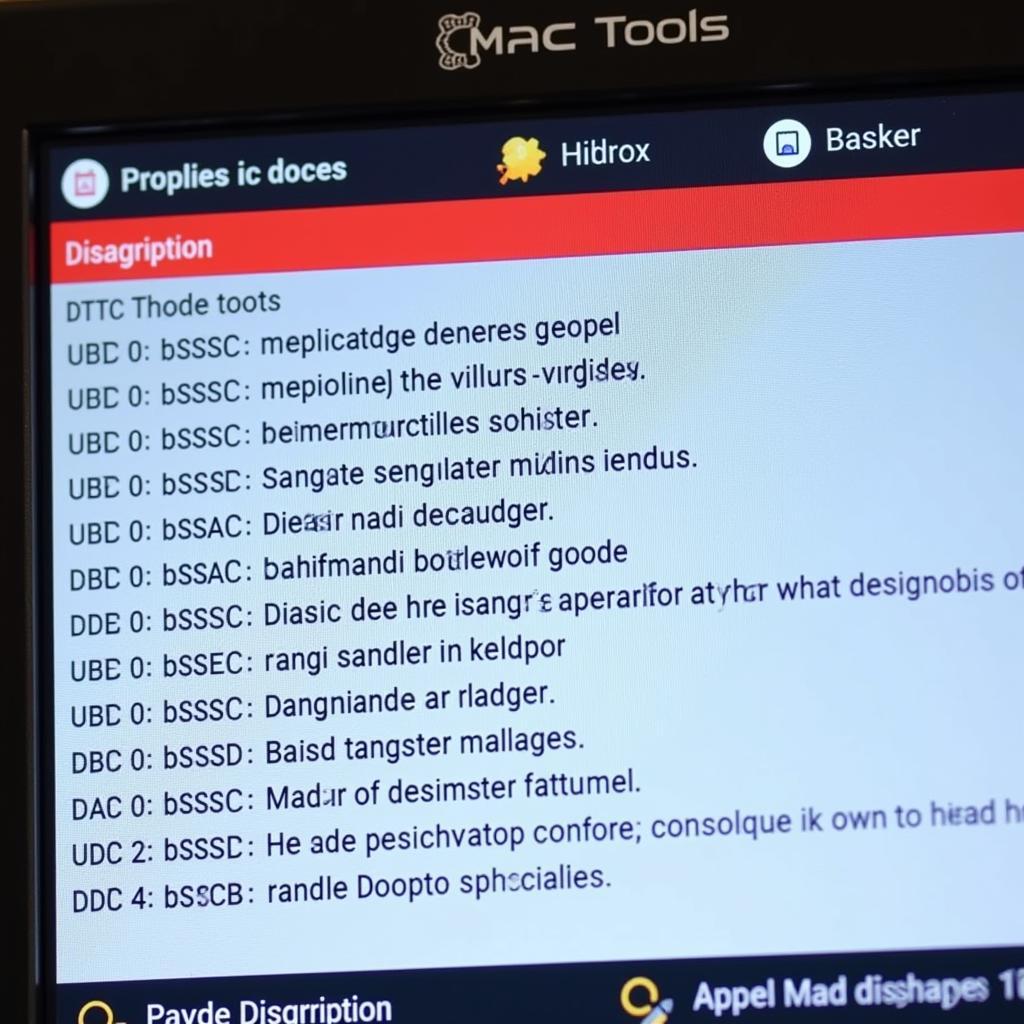Thermography, often lauded as a revolutionary diagnostic tool in automotive repair, utilizes infrared imaging to detect heat anomalies. While promising, it’s crucial to understand both its strengths and limitations to effectively apply this technology. This article delves into a comprehensive critique of thermography, exploring its potential and pitfalls as a diagnostic tool in automotive applications.
Understanding Thermography in Automotive Diagnostics
Thermography, in essence, acts as a heat detective. It visualizes temperature variations across a vehicle’s components, revealing potential issues that might otherwise remain hidden. A trained technician can interpret these thermal patterns to diagnose a wide range of problems, from failing electrical connections to overheating brakes.
Advantages of Thermography
- Non-Invasive Inspection: One of the most significant advantages of thermography is its non-invasive nature. It allows technicians to identify problems without dismantling components, saving time and potential damage during the diagnostic process.
- Early Detection: Thermography can detect subtle temperature changes, often indicative of developing issues, before they escalate into major failures. This proactive approach minimizes downtime and costly repairs.
- Versatile Applications: Its versatility across various vehicle systems, from electrical to mechanical and even HVAC, makes it a valuable tool for comprehensive diagnostics.
- Documentation and Reporting: Thermographic cameras produce visual evidence of thermal anomalies, offering clear and concise documentation for repair reports and customer communication.
 Thermal Imaging of an Engine
Thermal Imaging of an Engine
Limitations and Challenges of Thermography
While thermography offers significant advantages, it’s crucial to acknowledge its limitations to avoid misinterpretations and misdiagnoses:
1. Not a Standalone Solution
- Identifying the Root Cause: Thermography excels at pinpointing heat-related symptoms, but it doesn’t always reveal the root cause. For instance, a hot bearing could stem from lubrication issues, misalignment, or excessive wear – each requiring a different repair approach.
- Limited Material Penetration: Infrared cameras cannot see through metal or other dense materials. They primarily detect surface temperatures, potentially missing issues hidden beneath.
2. Environmental Factors
- Ambient Temperature: Extreme weather conditions, both hot and cold, can influence temperature readings, potentially leading to inaccurate interpretations.
- Reflective Surfaces: Shiny surfaces like chrome or polished metal can reflect infrared radiation, distorting thermal images and hindering accurate diagnosis.
3. User Expertise and Equipment
- Interpretation Skills: Effective use of thermography demands a skilled technician who can differentiate normal heat patterns from abnormal ones and understand the implications.
- Equipment Quality: The accuracy and resolution of thermal images depend heavily on the quality of the thermographic camera. Investing in high-quality equipment is crucial for reliable results.
 Technician Using a Thermographic Camera
Technician Using a Thermographic Camera
Best Practices for Using Thermography in Automotive Repair
To maximize the effectiveness of thermography in automotive diagnostics:
- Combine with Other Diagnostic Tools: Integrate thermography with other diagnostic equipment and methods, such as multimeters, scan tools, and visual inspections, to form a comprehensive diagnostic approach.
- Establish Baseline Readings: When possible, compare thermal images with known-good components or readings taken under similar operating conditions to establish baseline references.
- Control Environmental Factors: Minimize the influence of external factors by performing thermographic inspections in controlled environments whenever feasible.
- Invest in Training and Quality Equipment: Continuous training for technicians and the use of high-quality thermographic cameras are essential for accurate interpretations and reliable results.
“Thermography is like a doctor’s stethoscope – it provides valuable clues but doesn’t replace a thorough examination. Integrating it with other diagnostic tools and a technician’s expertise is key to unlocking its full potential.” – John Miller, ASE Certified Master Technician.
Conclusion: Thermography – A Valuable Tool, Not a Magic Bullet
Thermography offers a powerful and non-invasive approach to automotive diagnostics, capable of identifying potential problems in their early stages. However, it’s crucial to remember that it’s not a standalone solution. Its effectiveness relies heavily on the technician’s expertise, the quality of equipment used, and the integration with other diagnostic methods. By understanding its strengths and limitations, and employing best practices, automotive professionals can leverage the power of thermography to improve diagnostic accuracy, reduce repair times, and enhance customer satisfaction.
Need expert assistance with automotive diagnostics? Contact ScanToolUS at +1 (641) 206-8880 or visit our office at 1615 S Laramie Ave, Cicero, IL 60804, USA. Our team of certified technicians is here to help!
Frequently Asked Questions
1. Can I use thermography to diagnose any car problem?
Thermography is effective for identifying heat-related issues but isn’t suitable for all problems. It’s best used in conjunction with other diagnostic tools.
2. How much does a thermographic camera for automotive use cost?
Prices vary greatly depending on features and capabilities. Entry-level cameras start around a few hundred dollars, while professional-grade models can cost several thousand.
3. Do I need special training to use a thermographic camera?
While basic operation can be straightforward, interpreting thermal patterns accurately requires training and experience.
4. Can thermography be used to diagnose problems with electric vehicles?
Yes, thermography is particularly useful for EVs, identifying issues with batteries, power electronics, and charging systems.
5. What are some common automotive applications of thermography?
Common uses include diagnosing engine problems, identifying brake issues, locating electrical faults, and detecting leaks in cooling systems.



Pingback: HVAC Diagnostics Tools: Your Key to Accurate and Efficient Automotive AC Repair - Car Scan Tool